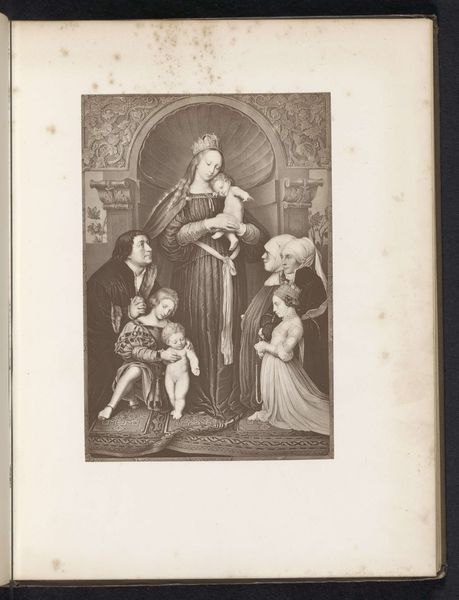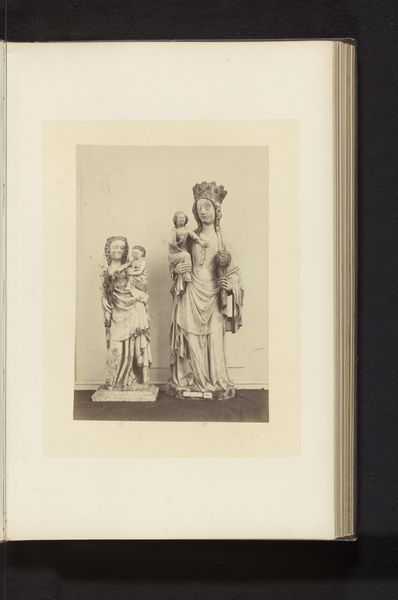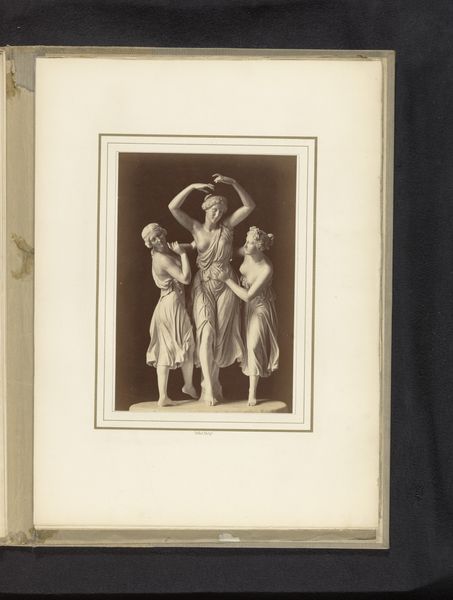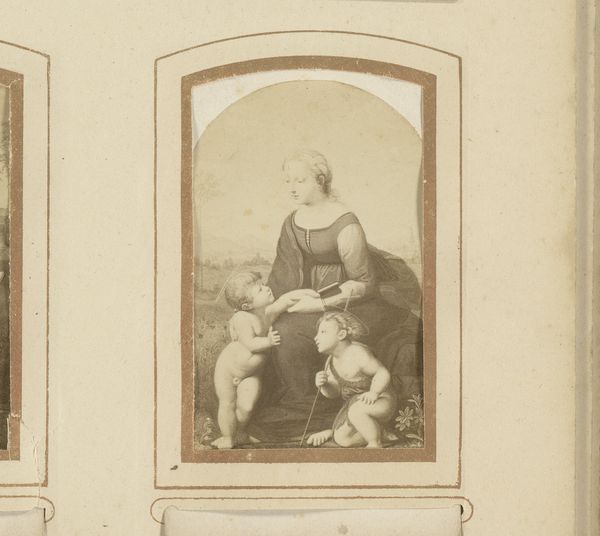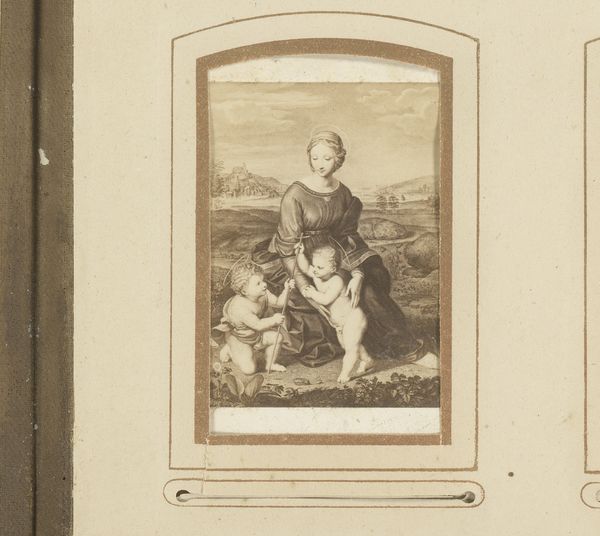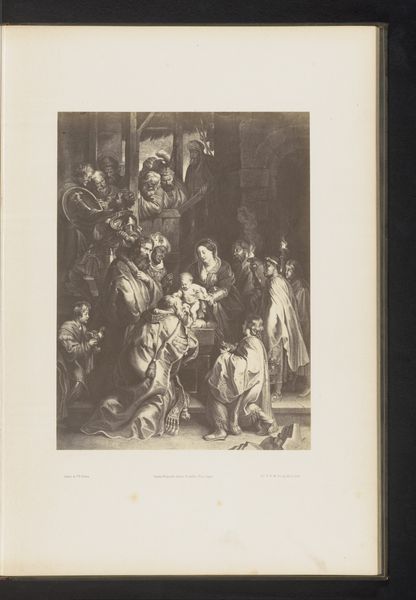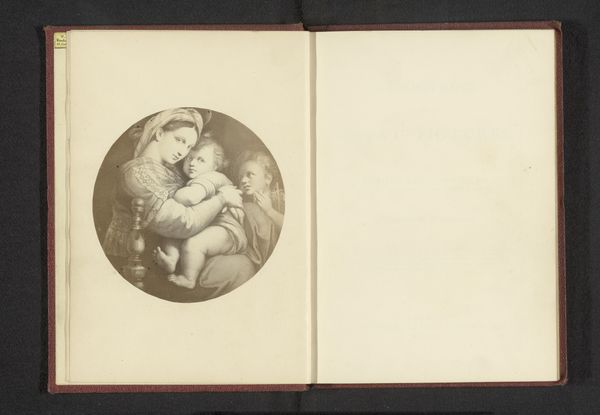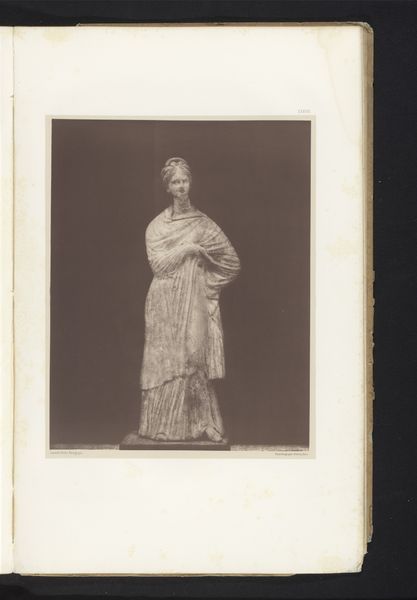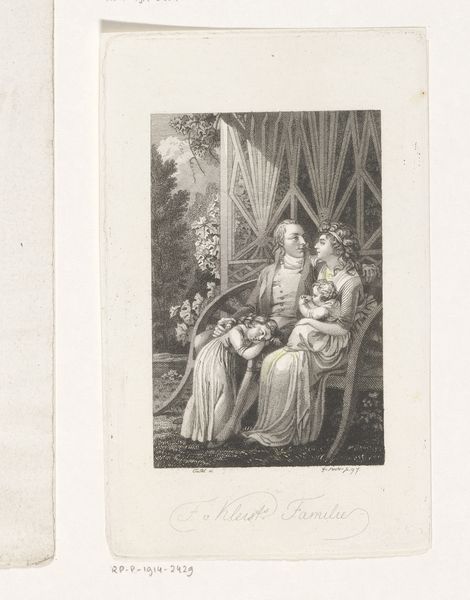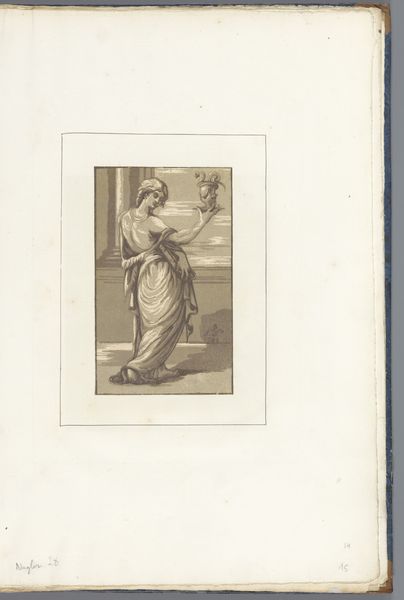
print, photography
#
portrait
# print
#
figuration
#
photography
#
coloured pencil
#
19th century
#
academic-art
Dimensions: height 230 mm, width 161 mm
Copyright: Rijks Museum: Open Domain
Curator: Here we have a print, a reproduction actually, of "La Grande Soeur" or "The Big Sister" by Jean-Louis Hamon, dating from before 1877. It's currently held here at the Rijksmuseum. What are your initial thoughts on it? Artist: Mmm, serene. There's a gentle stillness, even though it depicts these figures in what I presume is a casual domestic moment. A softness, like a memory viewed through muslin. Curator: Absolutely. Hamon was a prominent figure in the academic art world, known for his idealized and often sentimental depictions of domestic life. The title itself directs us towards the hierarchical roles within the family, something deeply embedded in 19th-century social structures. Artist: Right, I’m just thinking… the staging. The slightly elevated position of the big sister compared to the children she’s shepherding. The fabric of their dresses, so intentionally draped – it's carefully composed. Curator: Exactly. We see how representation, in this piece, served to reinforce societal expectations of women. The big sister embodies responsibility and grace, guiding her younger siblings. It reflects a very particular understanding of femininity at the time. How women were expected to behave and their primary purpose of child-rearing within the domestic space. The reproduction via print and photography would amplify and extend these cultural norms. Artist: It almost feels like… an advert for an ideal. A very subtly delivered one. Almost oppressive in how picturesque it aims to be. Do you think there’s anything rebellious here, anything against the grain? Curator: Subversion would be difficult to find. The piece embodies an aspirational domesticity marketed to specific, elite social circles. The symbolism is subtle, a narrative about childhood innocence and sisterly duty perfectly packaged for the bourgeois gaze. To find its power, is to find it in it's influence... the continuation of these kind of stereotypes it presented and spread. Artist: You know, despite everything we've discussed, there's still a tenderness that shines through. The light on the children's faces, the sister’s downward gaze, and a tangible connection to their world and imagined futures. It’s a sticky contradiction, but there nonetheless. Curator: Agreed, the image is rife with conflict—sentimentality and rigidity, individual emotions pressed against cultural constraints. That push and pull make it, even today, a compelling lens through which to view 19th-century ideology. Artist: Right, an uneasy glimpse. Well, I see it now... time to carry on.
Comments
No comments
Be the first to comment and join the conversation on the ultimate creative platform.
